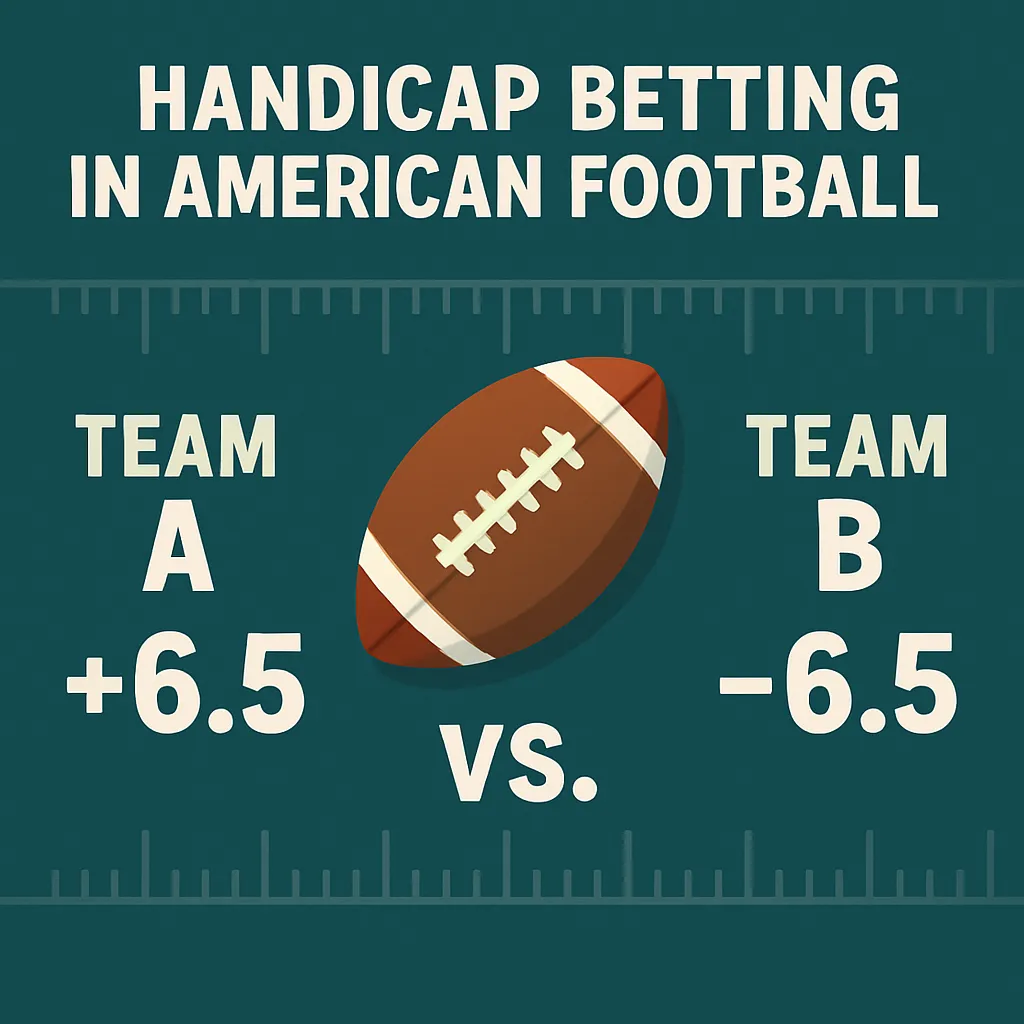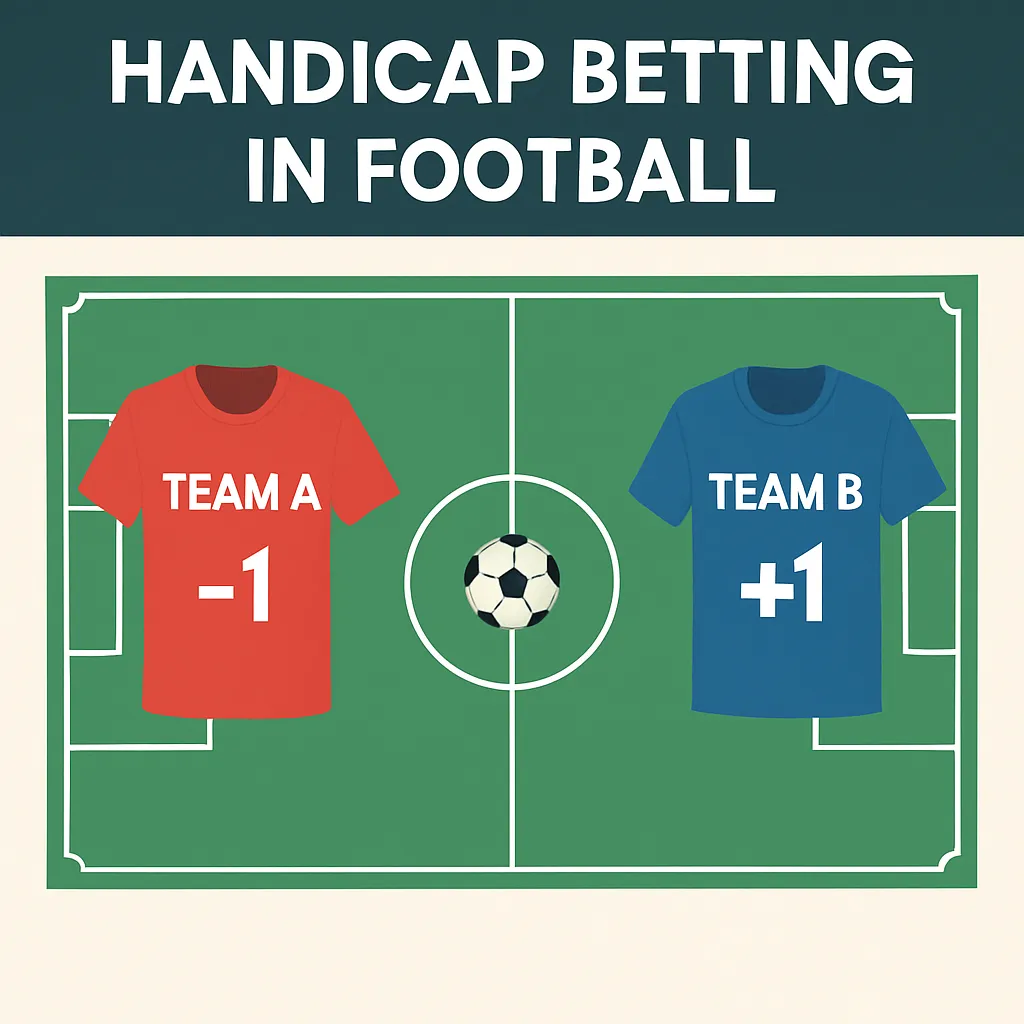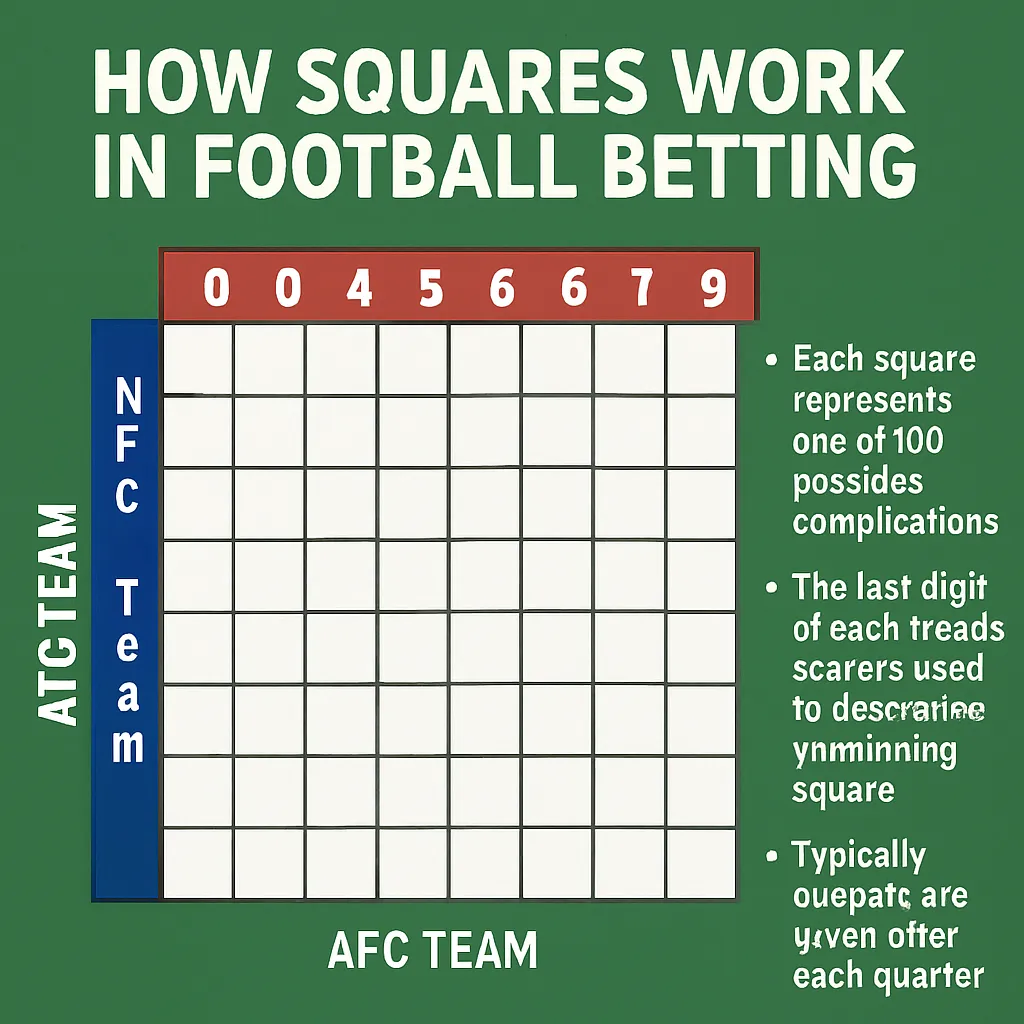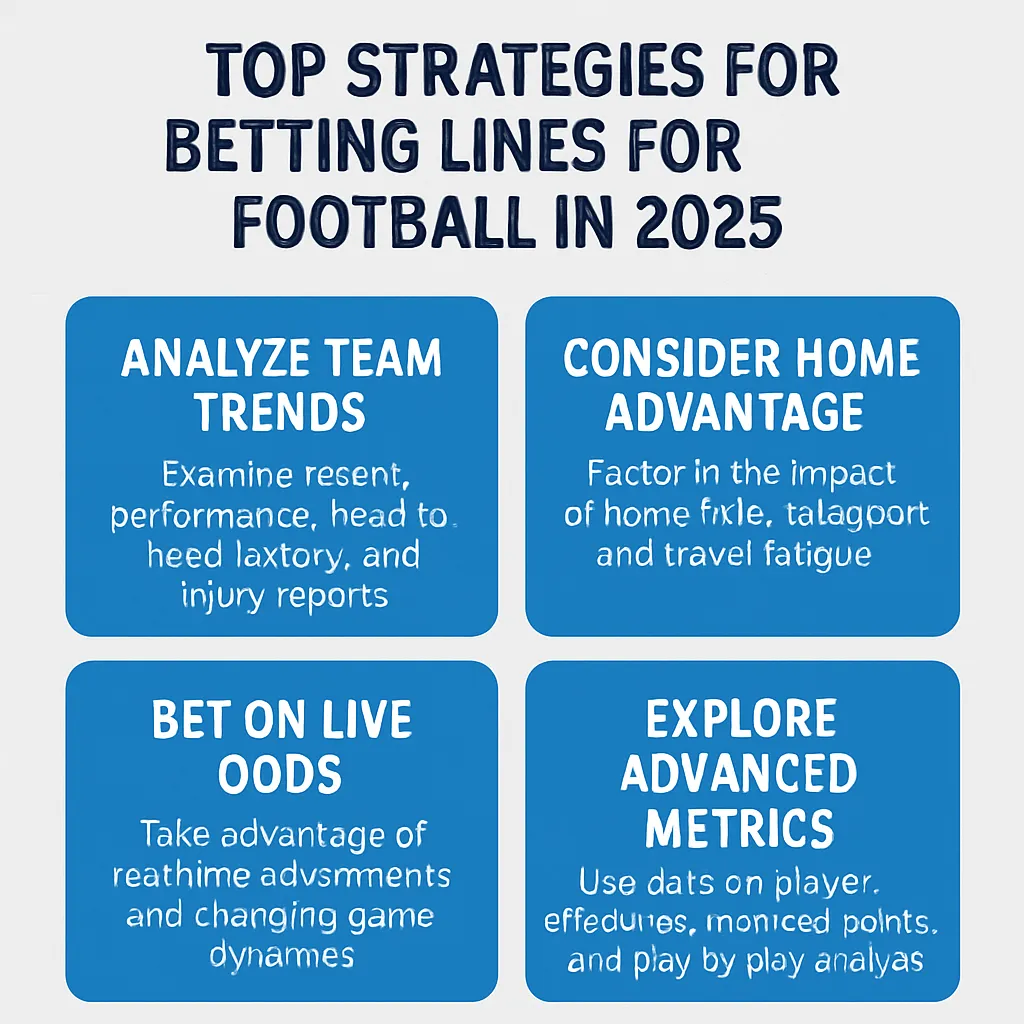Handicap betting in American football is a popular form of sports betting that levels the playing field between two teams by assigning a points “handicap” to the underdog or favorite. This approach to wagering allows bettors to engage more deeply with NFL betting lines and point spread markets, providing an extra layer of challenge and potential reward. In this comprehensive guide, we will explore the definition, mechanics, and strategies associated with handicap betting in American football, helping both novice and experienced bettors understand how to use this market effectively. Whether you’re new to sports betting or looking to enhance your betting strategy, this article will demystify the nuances of handicap lines and point spread betting. You’ll learn about key principles, market types, advantages, risks, and proven techniques for finding value bets. By the end, you’ll have clear, actionable insights to apply to your next NFL betting session.
Understanding the Basics of Handicap Betting
Before diving into specific markets and strategies, it’s crucial to grasp the fundamental concept of handicap betting in American football. At its core, handicap betting (also known as point spread betting) involves giving one team a virtual advantage or disadvantage to balance perceived differences in team strength. This method ensures that both sides of the bet attract roughly equal action from bettors, which helps sportsbooks manage risk while offering compelling odds.
Handicap betting differs from traditional moneyline bets, where you simply pick which team will win outright. Instead, you must consider the point spread, which represents the margin by which the favored team must win—or by which the underdog can lose—to satisfy the wager. Understanding these basics lays the groundwork for more advanced concepts like Asian handicap and three-way handicap markets. In the following sub-sections, we’ll define handicap betting and compare it to other betting types commonly found in sports betting.
Definition of Handicap Betting
Handicap betting is a market where sportsbooks assign a numerical value, called the handicap or point spread, to even out the difference between two teams’ perceived strengths. For example, if Team A is heavily favored over Team B, the bookmaker might set a handicap of -7.5 for Team A and +7.5 for Team B. A bet on Team A will only pay out if Team A wins by more than 7.5 points; conversely, a bet on Team B wins if Team B wins outright or loses by fewer than 7.5 points.
This system effectively creates two equally attractive betting options, as the handicap compensates for perceived skill gaps. Handicap betting in American football emphasizes point differentials rather than outright winners, which can make NFL betting more strategic and engaging. By focusing on point spreads, bettors must analyze team performance, injuries, weather conditions, and coaching tactics to predict not just the winner, but the margin of victory.
In practice, handicap betting transforms raw wins and losses into a more nuanced contest, calling for deeper statistical analysis and situational awareness. It’s this depth that attracts many bettors to the point spread market.
Key terms associated with handicap betting include “spread,” “line,” “juice” (the sportsbook’s commission), and “over/under” (a separate betting type focusing on total points scored). Mastering these terms is vital for interpreting NFL betting lines accurately and placing informed bets.
Ultimately, handicap betting offers a balanced framework for wagering on mismatched teams by adjusting the challenge for both bettors and bookmakers. This mechanism is at the heart of point spread and spread betting in American football.
With these foundational definitions in place, the next sub-section will compare how handicap betting differs from other types of sports betting.
How Handicap Betting Differs from Other Betting Types
Unlike moneyline bets, which require selecting the outright winner regardless of score, handicap betting involves predicting whether a team will overcome or fail to overcome a point spread. This fundamental difference introduces a layer of complexity and strategy absent from simpler bet types. Moneyline bets are straightforward but can offer skewed payouts when favorites are heavily priced.
By contrast, handicap betting equalizes action on both sides of the wager. For example, a moneyline bet on a heavy favorite might pay very little, while the handicap bet offers more balanced odds by requiring the favorite to win by a certain margin. This makes point spread wagering more attractive for bettors seeking value in lopsided matchups.
Another common betting type is over/under or totals betting, which focuses on predicting the combined score rather than the margin of victory or outright winner. Over/under markets complement handicap betting, as bettors can simultaneously gauge team offense and defense strengths to forecast both the total points and the point spread outcome.
Parlay bets allow combining multiple wagers (including handicap bets) into a single bet for larger potential payouts. However, the risk escalates with each leg added. Understanding how handicap markets fit into parlay strategies can enhance overall betting portfolio performance.
Lastly, proposition bets (prop bets) focus on specific player or team achievements (e.g., passing yards, touchdowns), which differ completely from spread-based handicaps. Handicap betting remains one of the most popular core markets in sports betting due to its balance of risk and reward.
In summary, handicap betting in American football distinguishes itself by focusing on point margins rather than outright outcomes, requires deeper analysis, and offers balanced odds for both sides of a mismatch. Next, we’ll dive into exactly how these handicap lines work in practice.
How Does Handicap Betting Work in American Football?
Now that you understand the basic concept and how handicap betting differs from other wagering types, it’s time to examine the mechanics of handicap lines in American football. This involves exploring how bookmakers set these lines, the factors that influence them, and practical examples of betting scenarios. Mastery of the principles behind handicap lines will improve your ability to read NFL betting lines and identify value.
In this section, we’ll cover the key principles bookmakers use when establishing handicap markets and demonstrate with real-world examples how these thought processes translate into actionable betting options. Whether you’re placing a straight point spread bet or incorporating handicaps into a more complex betting strategy, these insights will be essential.
Key Principles of Handicap Lines
Bookmakers set handicap lines, or point spreads, based on a combination of statistical analysis, team form, public betting patterns, and situational factors such as injuries or weather. The goal is to predict where the majority of bets will fall and adjust the line to balance action and limit liability.
Key principles include:
- Statistical Performance: Historical data on offense, defense, special teams, and home/away splits.
- Injuries and Rosters: Missing key players can significantly shift the handicap line.
- Weather and Venue: Wind, rain, temperature, and turf conditions all impact scoring potential.
- Public Perception: Highly popular teams may attract disproportionate bets, prompting line adjustments.
- Line Movement: As bets come in, sportsbooks adjust the spread to maintain balanced betting action.
By understanding these principles, bettors can anticipate line movements and potentially secure more favorable odds. For instance, if early betting favors the public on a popular favorite, savvy bettors might wait for the line to shift further in their favor before placing a wager on the underdog.
Recognizing when handicaps are inflated or deflated due to public bias is a key skill in developing effective betting strategies. In the next sub-section, we’ll look at clear examples to illustrate how handicap betting scenarios play out in practice.
Examples of Handicap Betting Scenarios
Consider a matchup between the Kansas City Chiefs and the Miami Dolphins. If the Chiefs are favored by 6.5 points, the handicap line would appear as:
Chiefs -6.5 vs. Dolphins +6.5
If you bet on the Chiefs, they must win by at least 7 points for a winning bet. If you bet on the Dolphins, they can lose by up to 6 points or win outright for your bet to succeed.
Another scenario might involve a smaller spread, such as:
Patriots -2.5 vs. Jets +2.5
Here, a Patriots bet requires a 3+ point victory, while the Jets can lose by up to 2 points. These fractional spreads eliminate push outcomes (ties), ensuring every wager has a definitive result.
In some cases, spreads can reach double digits for blowout favorites:
49ers -14.5 vs. Cardinals +14.5
Betting such large spreads often requires careful consideration of team motivation and situational factors, as favorites might rest starters once games enter a decisive phase. By reviewing these examples, bettors gain practical insights into how different handicap levels influence betting decisions.
With a clear understanding of how handicap lines work, let’s explore the various types of handicap betting markets available in American football.
Types of Handicap Betting Markets
Handicap betting markets in American football have evolved to include several variants, each offering unique nuances and advantages. While traditional point spreads remain the foundation, markets such as Asian handicap and three-way handicap provide bettors with different risk/reward profiles. Understanding these market types will help you choose the most suitable option for your betting objectives.
Asian Handicap in American Football
Asian handicap betting, originally popular in soccer, has crossed over into American football, offering bettors a more granular way to wager on point spreads. Unlike traditional handicaps, which use half-point increments, Asian handicaps can involve quarter-point lines (e.g., +2.25, -3.75). These fractional spreads effectively split your stake across two adjacent traditional spreads, reducing the chance of a push and offering half-win or half-loss outcomes.
For example, if the line is Chiefs -3.75, half your stake is placed at -3.5 and half at -4.0. If the Chiefs win by exactly 4 points, the -3.5 half wins and the -4.0 half pushes. This nuanced outcome can be attractive for bettors seeking to minimize risk in close matchups.
Asian handicap markets also tend to feature tighter margins, with juice often lower than standard spreads. This can translate into better long-term value if you can accurately forecast narrow margins of victory. Research and statistical modeling play a crucial role when selecting Asian handicap bets, as precision is paramount.
While Asian handicaps offer sophisticated betting options, they require careful bankroll management due to the possibility of half-wins and half-losses. Bettors should be comfortable with these outcomes and understand how to calculate potential returns accordingly.
Next, we’ll examine three-way handicap betting, another variant that provides distinct advantages.
Three-way Handicap Betting Explained
Three-way handicap betting introduces a third possible outcome— a draw— to the point spread market. In this market, three lines are offered: a handicap for Team A, a handicap for Team B, and the draw. For instance:
Patriots -3 | Draw +3 | Jets +3
Here, if the Patriots win by more than 3 points, bets on Patriots -3 pay out. If they win exactly by 3, draw bets win. And if the Jets win outright or lose by fewer than 3, bets on Jets +3 pay out.
This market adds an extra layer of complexity but can yield favorable odds when draws (exact-point margins) are underestimated by bookmakers. However, tie outcomes in American football handicaps are relatively rare compared to soccer, so three-way handicaps often carry higher juice or less favorable odds.
Bettors interested in three-way handicaps should focus on matchups where exact-point victories are historically common due to team playing styles or situational factors like in-game momentum swings. You can exploit inefficiencies if the draw line is mispriced.
Having explored the main types of handicap betting markets, let’s summarize their key characteristics in the table below.
| Market Type | Description | Key Feature |
|---|---|---|
| Traditional Point Spread | Standard handicap using half-point increments to eliminate pushes. | Simple win/lose outcome, no draws. |
| Asian Handicap | Fractional handicaps (quarter points) splitting stakes across two lines. | Half-win/half-loss outcomes, reduced push probability. |
| Three-way Handicap | Includes draw option alongside handicaps for both teams. | Three possible outcomes; draw line can offer value. |
Advantages and Risks of Handicap Betting
Handicap betting in American football offers a balanced and strategic way to engage with NFL betting lines, but it also comes with unique risks. Understanding both sides is essential for responsible wagering. In this section, we will explore the benefits of handicap betting and highlight common pitfalls bettors face, along with methods to mitigate those risks.
Benefits of Using Handicap Betting
Handicap betting levels mismatches by providing more balanced odds for favorites and underdogs. This makes every game attractive, regardless of team disparity, and helps bettors find value even in lopsided matchups. By focusing on point margins, bettors can leverage advanced statistical models and situational analysis to identify inefficiencies in line movements.
Another key advantage is the ability to use handicaps in parlays and teasers, where point spreads can be adjusted to create more favorable outcomes. Teaser bets allow you to move the line in your favor at the cost of reduced odds, which can improve parlay success rates.
Handicap markets also encourage deeper engagement with team analytics, injuries, weather impacts, and game-flow predictions. This research-intensive approach can lead to more informed betting decisions over time and foster a strategic mindset rather than purely gut-based wagering.
Finally, handicap betting can smooth out short-term variance by focusing on consistent statistical edges instead of occasional outright upset picks—a key principle for long-term profitability in sports betting.
With these benefits in mind, it’s important to recognize the inherent risks and learn how to manage them effectively.
Common Risks and How to Mitigate Them
Despite its advantages, handicap betting carries risks such as overestimating public perception, misjudging situational factors, and failing to account for late roster changes. Incorrect analysis can lead to consistently poor results and bankroll depletion.
Below is a numbered list of common risks and their mitigation strategies:
-
Risk: Public Bias — Being influenced by popular teams can skew betting judgment.
Mitigation: Track line movements and wait for value when lines shift due to public money.
-
Risk: Over-Reliance on Statistics — Ignoring qualitative factors such as locker room morale or coaching changes.
Mitigation: Combine quantitative data with qualitative insights from credible news sources and injury reports.
-
Risk: Bankroll Mismanagement — Betting too large relative to total bankroll.
Mitigation: Use fixed-percentage staking plans (e.g., 1–2% of bankroll per bet).
-
Risk: Ignoring Weather and Venue Effects — Failing to adjust handicaps for rain, wind, or turf.
Mitigation: Consult weather forecasts and venue histories when analyzing line value.
-
Risk: Chasing Losses — Increasing bet size after a losing streak.
Mitigation: Stick to predefined staking strategies and avoid emotional decisions.
By acknowledging these risks and applying disciplined mitigation strategies, bettors can enhance the long-term viability of their handicap betting in American football. Next, we’ll discuss specific strategies to succeed in this market.
Handicap Betting Strategies for Success
Successful handicap betting requires more than recognizing line values; it demands systematic research, disciplined bankroll management, and the ability to identify value bets. In this section, we cover critical research and analysis techniques as well as tips for spotting profitable opportunities within the point spread markets.
Research and Analysis Techniques
Thorough research is the foundation of profitable handicap betting. Begin by collecting and analyzing relevant data such as team offensive and defensive rankings, turnover margins, red zone efficiency, and special teams performance. Advanced bettors often build predictive models using regression analysis or machine learning algorithms to forecast expected point differentials.
Key analysis techniques include:
- Historical Matchup Analysis: Examine past meetings between teams to identify trends in scoring margins and strategic patterns.
- Injury Impact Assessment: Evaluate how missing key players—particularly quarterbacks and skill-position athletes—affect expected performance.
- Weather Simulations: Use weather data to adjust models for wind, rain, or snow that can suppress or inflate scoring.
- Public Betting Data: Monitor percentage of bets and money on each side to spot contrarian opportunities when lines move.
- Situational Factors: Consider motivation (e.g., playoff implications) and travel schedules that can influence team performance.
By rigorously applying these techniques, bettors can generate more accurate projections and identify when sportsbooks have mispriced the handicap lines. This research-driven approach is essential for consistent profitability.
Tips for Finding Value Bets
Finding value in handicap betting means locating situations where the true probability of an outcome differs from the implied probability in the odds. Here are actionable tips to help uncover value bets:
- Watch for Early Lines: Bet soon after lines open if you believe the initial handicap is mispriced before public money moves it.
- Shop Multiple Sportsbooks: Maintain accounts at several sportsbooks to compare point spreads and juice; even half-point differences can be valuable over time.
- Use Line Shopping Tools: Leverage online odds aggregators to identify favorable spreads and best available juice.
- Exploit Teasers: Move spreads in your favor by bundling handicap bets, but calculate expected return carefully due to reduced odds.
- Follow Sharp Money: Look for line moves triggered by professional bettors (“sharps”), which can indicate an edge you can ride.
Implementing these tips alongside robust research will enhance your ability to spot profitable handicap betting opportunities. With a disciplined approach and continuous learning, you can improve your ROI in American football point spread markets.
Can You Bet on a Tie with a Handicap?
In traditional half-point handicap betting, ties (pushes) are eliminated by the use of fractional spreads (e.g., -3.5 instead of -3). However, in three-way handicap markets, a draw option is explicitly offered. Betting on the draw means you expect the winning margin to equal the handicap exactly. While draws are rare in American football handicaps, three-way markets accommodate this possibility with distinct odds.
In Asian handicap markets, quarter-point lines split stakes to avoid pushes. As a result, true ties are effectively managed through half-wins or half-losses rather than outright refunds.
What’s the Difference Between Handicap and Spread Betting?
“Handicap betting” and “spread betting” are often used interchangeably in American football. Both terms refer to wagering on the point difference between teams. However, “spread betting” can also refer to a financial derivative product in some jurisdictions, which involves profiting from the accuracy of a bet rather than a fixed stake. In U.S. sports betting parlance, though, handicap betting and point spread betting mean the same thing: assigning a points handicap to balance team matchups.
Understanding this terminology will help you navigate sportsbook menus and avoid confusion when placing bets.



